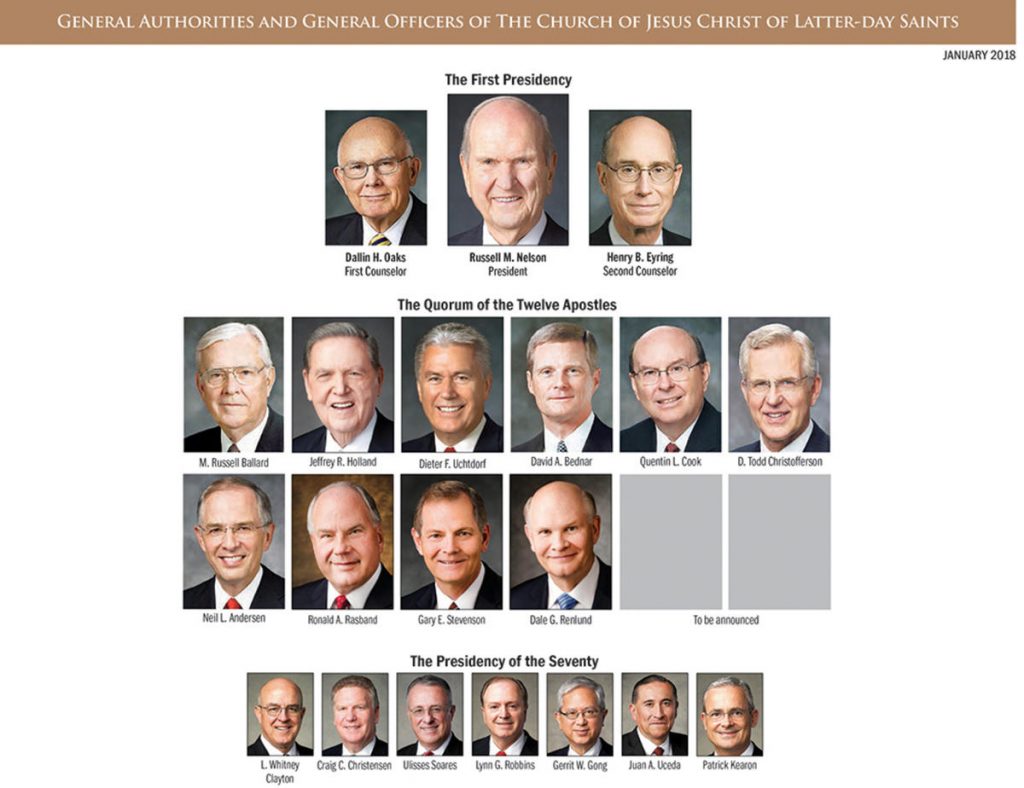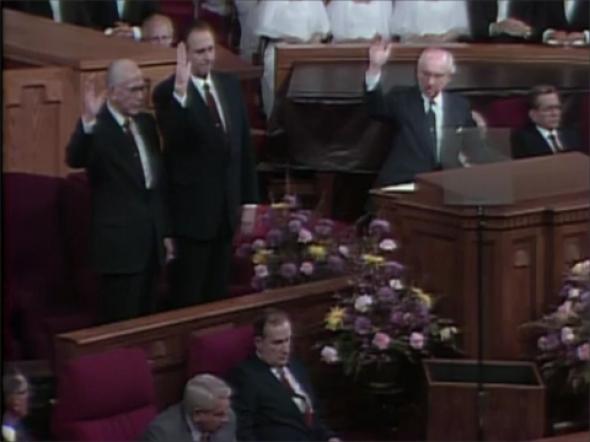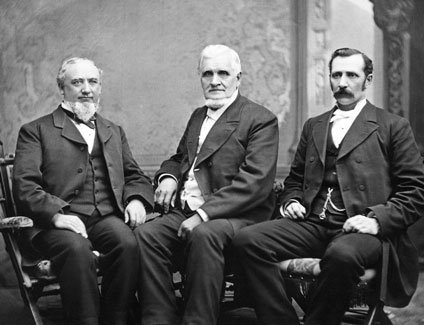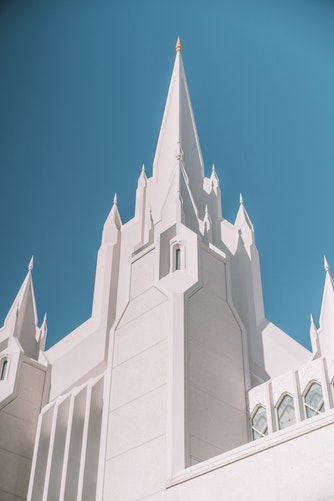What is a Solemn Assembly? We’re Having one This Saturday
What is a Solemn Assembly?
Before I knew what the phrase “solemn assembly” meant, I was kind of freaked out by it. My first assumption was that the General Authorities would give the Church a new commandment, policy, or requirement that would be so difficult to accept that we would all feel solemn. I know it’s silly, but that’s my mind for you.
In reality, a solemn assembly is solemn because it is so sacred. Mormon Newsroom describes solemn assemblies this way:
A solemn assembly is a sacred meeting held by The Church of Jesus Christ of Latter-day Saints, most often at a general conference after a new Church president begins his service. In these meetings, Latter-day Saints around the world gather to show support for the new Church president and others included in the Church’s worldwide governing body including general membership from age 8 and older.
We get to witness the turning of authority from one beloved leader to another. We get to decide if we will sustain our new leaders with our hands and with our hearts.
Then-Elder Nelson explained:
Twenty-six years before he became President of the Church, then-Elder George Albert Smith said: “The obligation that we make when we raise our hands … is a most sacred one. It does not mean that we will go quietly on our way and be willing that the prophet of the Lord shall direct this work, but it means … that we will stand behind him; we will pray for him; we will defend his good name, and we will strive to carry out his instructions as the Lord shall direct.”
There’s always a sustaining vote. What will be different?

Lots of standing.
Let me explain: when a new prophet is being sustained, each quorum and group stands and votes separately.
In the first session of General Conference, the person leading (likely either the first or second counselor of the First Presidency) asks the First Presidency to please arise. The First Presidency holds their own sustaining vote for the First Presidency, the President of the Quorum of the Twelve Apostles, and the individual members of the Quorum of the Twelve Apostles.

When President Hinckley led the First Presidency sustaining vote for President Benson, others in the congregation raised their hands. In his sweet, witty way he chided, “Only those standing will vote at this time. You will have your turn.”
Next, the conductor will ask the Quorum of the Twelve Apostles to stand and sustain President Nelson as the prophet.
Here’s the expected order of events for Saturday’s Solemn Assembly:
- The person leading (likely either President Eyring or President Oaks) will stand and announce that President Nelson has asked him to conduct the business of this solemn assembly.
- He will give traditional opening remarks that will likely echo what leaders have said in the past when sustaining the new prophet.
- He will ask the First Presidency to stand. They will hold their sustaining vote. Two new apostles will be sustained. They are seated.
- The new apostles will take their place with the Quorum of the Twelve.
- He will ask the Quorum of the Twelve Apostles to stand, hold their sustaining vote, and to be seated.
- He will ask the members of the First and Second Quorums of the Seventy and the Presiding Bishopric to stand. They will hold their sustaining vote and be seated.
- Area Seventies, ordained patriarchs, and all members of high priests and elders quorums will be asked to stand, will hold their sustaining vote, and will be seated.
- Aaronic Priesthood holders, meaning ordained priests, teachers, and deacons, will follow the same pattern and vote next.
- All members of the Relief Society stand and hold their sustaining vote.
- All young women stand and hold their sustaining vote.
- “The entire membership, wherever assembled” stands again. The entire Church body holds a final sustaining vote. Everyone is seated.
What is the history behind solemn assemblies?

When President Gordon B. Hinckley was the Second Counselor in the First Presidency, he led the solemn assembly when President Ezra Taft Benson was sustained as the prophet. He explained:
Dating from October 10, 1880, when John Taylor was sustained to succeed Brigham Young as prophet, seer, revelator, and President of the Church, each such occasion has been designated a formal Solemn Assembly of the body of the Church to express the voice of the Church.
President Uchtdorf included a similar statement when he led the Solemn Assembly in which President Monson was sustained as the prophet. We may hear a similar statement included in this upcoming Solemn Assembly.
Temples and Prophets

Like dedicating a new temple, sustaining a new prophet is a solemn yet joyous experience. A temple is a house for God’s Spirit, power, and ordinances. The same power and authority existed before, but when a new temple is dedicated, that power is given to a new House of the Lord.
The keys of the priesthood have been around long before President Nelson became the prophet, but now those keys are being passed down to a new vessel. President Russel M. Nelson is a prophet of God. He holds the keys necessary to direct a fallen world toward the Savior, Jesus Christ.
“I declare my devotion to God our Eternal Father and to His Son, Jesus Christ. I know Them, love Them, and pledge to serve Them—and you—with every remaining breath of my life,” President Nelson said during his first address to the world as the prophet.
This solemn assembly will be a sacred opportunity to feel Christ’s work continue through His chosen vessels.


